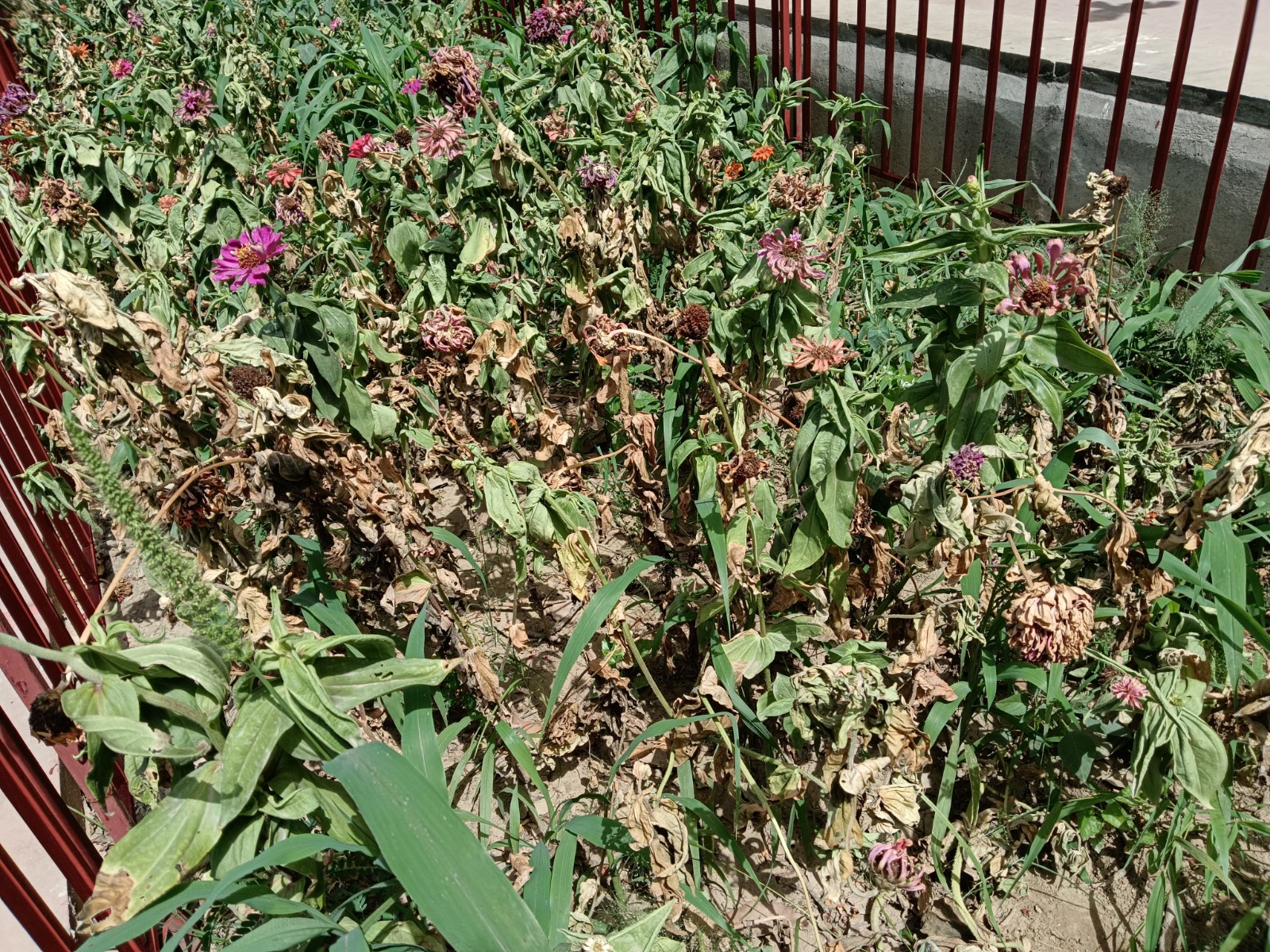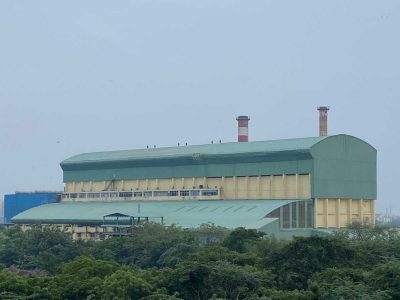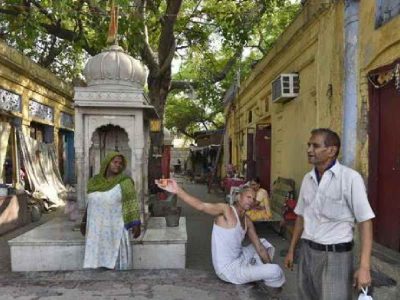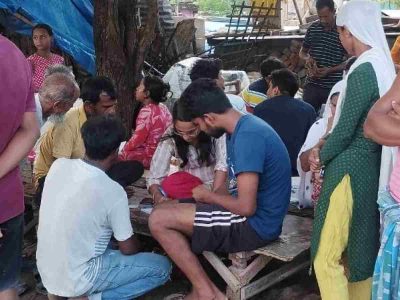The unexpected change in weather in the month of May has affected the plants in positive as well as negative ways. While plants that had grown before the rains, are blooming due to May showers, those in their nascent stages have been spoiled due to excessive water.
Rishi Kumar, gardening supervisor at the Lodhi Gardens, says that almost 80% of the hybrid plants have been affected by rains, as against 20% local plants.
“These plants include those in their nascent stage such as sadabahar, sunflowers, kaskasa, and kochiya,” he says.
The Gardens’ seasonal plantation is almost 80% in the winters, and 20% in the summer, Rishi adds.
“We do not expect much during the summers when it comes to plants. I would say that if the plantation during winters is 80%, it is 20% during summers. When it comes to the workforce, the work of gardeners also reduces significantly because we do not want them to suffer in the heat,” he says.
Ravi, a gardener in Rajghat, also tells Patriot that baby plants, especially sadabahar, cannot survive if water supply is more than required.
“This is the case with nascent plants only,” he says.
While the early rains have damaged baby plants, bloomed grown ones, and offered some relief to the gardeners as well, the scorching heat during June has turned the story upside down. Many gardeners inform that plants die during the month of June due to lack of water.
“This is majorly because of the lack of proper water supply,” says Ram Rajesh, a gardener at Sunder Nursery.
Even as plants dry up, the gardeners continue to work.
“It used to get totally unbearable in May. However, rain this year has really helped. June has just started, and we are prepared for it,” says Rajvanti, a gardener at Connaught Place’s Central Park.
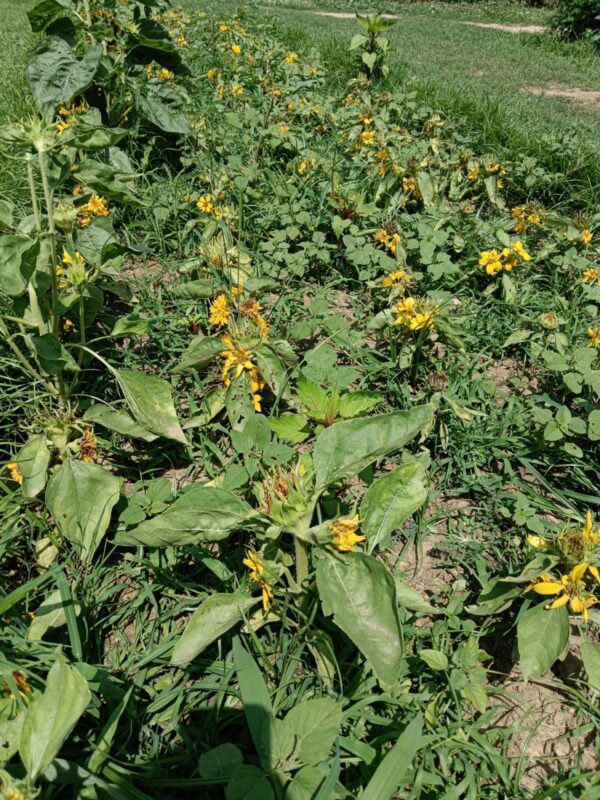
She works tirelessly in the scorching sun at one in the afternoon. A resident of Narela in Delhi, Rajvanti, 40, says that although summer heat becomes unbearable at times, she has to “work as it is the only way I can feed my children”.
Rajvanti took her husband’s job after he died in 2006.
Her co-worker, Umesh Kumar, a 58-year-old gardener in Connaught Place’s Central Park, takes a train from his native village Khurja in Uttar Pradesh to Delhi at 4:45 every morning.
He reaches the Capital at 8:30 am, and starts his duty at 9 am. By the end of the day, at around five in the evening, he returns to his village where he treats himself to a glass of fresh buffalo milk.
“One cannot work and live in Delhi’s pollution. It’s better to travel 120 km every day than stay in this pollution and heat. Also, one should always have warm milk to keep the strength,” says Kumar prescriptively, as he proudly tells about the number of buffaloes he has.
From wrapping their water bottles with layers of cold cloth to prevent water from getting warm to randomly taking a few moments of relief under the shade of the trees they planted, these gardeners’ attitude towards the heat remains nonchalant because “who will earn a livelihood if we give in to heat?”
According to some gardeners in Lodhi Gardens, even drinking cold water becomes a dream as there are no water coolers in the premises for the workers.
“We drink from that tank,” says one of the gardeners there, as he points to a water tank exposed to the sun.
“Would you drink from it? But we do. This is the condition of the workers here.”
In Sunder Nursery, the situation is not so different. According to Rakesh, long working hours that expose them to sun often leaves them vulnerable to heat strokes, exhaustion, and headache.
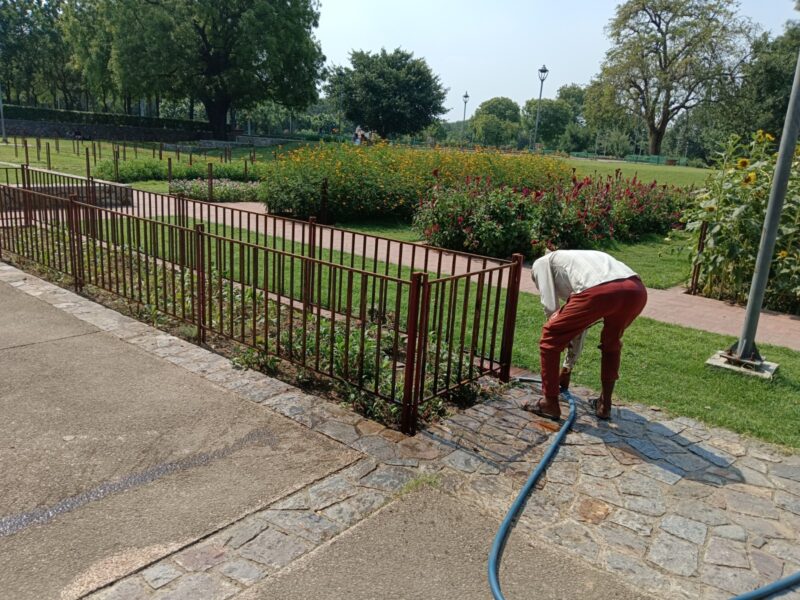
“I have seen some of them lose their sight due to this heat,” he says.
“We save ourselves from it in the ways we can. Just like during winters, workers put up a fire to protect themselves from the cold, in summers we dip our feet in water when we are working. This gives us a little relief. Also, one must always wear a gamchha because it protects one from the sun. We wet this gamchha in the merciless heat and then wear it so that our head remains cool. This is very important. Eating well and resting well is also important,” says Rakesh, who lives in a basti near Nizamuddin Dargah.
To maintain strength and protect one from heat, labourers often drink Sattu sharbat or bel juice.
“One should not have much bel juice, or you will spend your day lying on the ground instead of working,” one of them jokes.
Many women labourers in the nursery have been affected adversely by heatwaves. They come from nearby villages of Jhansi to look for work as living in the village has become almost impossible for them.
A labourer who has just started working in the nursery tells Patriot on condition of anonymity, that she came to the Capital because she could not “even eat the crop they cultivated, forget about earning from it”.
“What do we do now? We are so clueless here because we do not know how the city works. Although we understand this work (gardening), we do not know how to survive here. The land we have back in our village does not give us anything now. We can’t just live off on a few kilos of wheat,” she says.
Anil Kashyap, 18, who hails from a village near Jhansi and came with the women, says that he would never come to Delhi if there was enough rain in his village.
“Farming there becomes extremely difficult. The ponds are not deep enough to contain water for farming and there is no equipment for water supply. Rains are unpredictable and not much. This makes our job extremely difficult and we have come here because it is our last chance at survival,” he says.
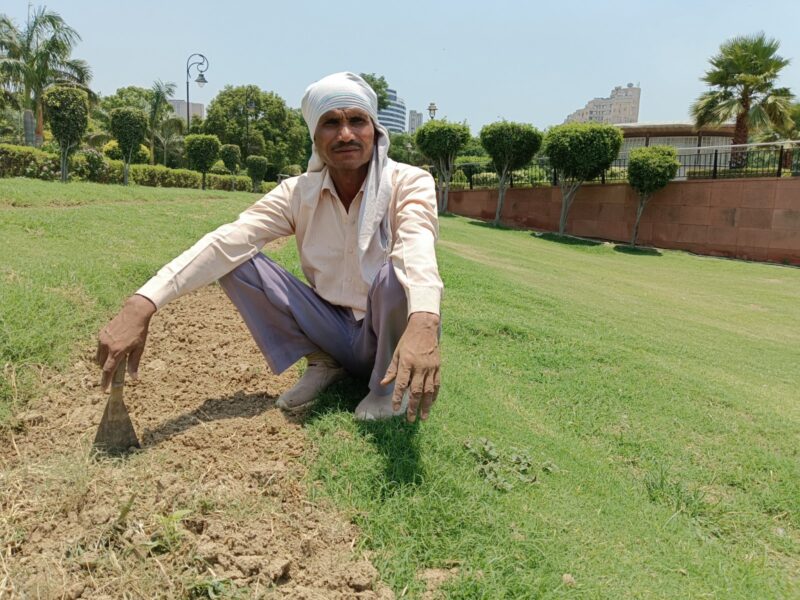
The gardeners echo the same sentiments in Rajghat and Nehru Park.
“Yes, there has been some relief, but it’s not much. But we have to work – be it winter or summers. The best thing we do to protect ourselves from the scorching heat is work in shifts – we plan our work in such a way that we do not have to work during peak heat hours. However, we will have to work even at these hours,” says Ravi, a gardener at Rajghat, as he ends his day by reporting to the Assistant Director of Gardening there.

